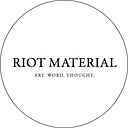Hew Locke: Here’s the Thing
at Ikon Gallery, Birmingham UK (through 2 June)
Reviewed by Christopher P Jones
Hew Locke makes art to discover things. This is the sense you get. It explains why there is so much texture and variety throughout his work. For the viewer, being with an artist who seems to be in the act of turning over a dozen stones at once, it is a rewarding experience.
Open-eyed, critical but not dogmatic, Locke comes across as an artist who is happy to reveal his anxieties. Much of his work is a personal response to the history of European colonialism and especially to Guyana, a country with a long history of colonial subjugation. First from Dutch imperialism and then under the British Empire in the late 18th century, Guyana finally gained its independence in 1966.
Locke is the son of Guyanese sculptor Donald Locke and British painter Leila Locke. Born in Scotland, as a child he lived with his parents in Guyana’s capital, Georgetown, before returning to the UK to study and settle.
Migration and identity, then, are key themes of Locke’s work, and the image of the ship recurs as the sovereign emblem of life’s comings and goings. Model boats — junks, sloops, slave ships — some of them found-objects, others built by the artist, float through the exhibition from beginning to end.
According to Locke, Guyana “means land of many waters — you are constantly aware of boats. I went to Guyana as a five-year-old kid on a boat. I came back here on a boat. So many things, good and bad, travel by boat.”
The ambivalence of the these model ships, being attractive and playful, toy like, whilst also representing the mechanisms of colonial power, give rise to a complex thought: that Locke himself is unsure about the history he reflects on and his place in it. “Today’s refugee, tomorrow’s citizen,” he says.
The theme of ships culminates in the powerful Armada (2019). Around fifteen model boats are suspended at head height by wires, appearing to float in midair like a ghostly galleon. The ships, modelled out of wood and brightly coloured, articulate a ‘site’, a moment of crafted space to focus on, a meeting point of ideas, the back and forth of historical contemplation between past and present.
When Locke speaks of the “burden of history” you have a sense he resigned to never quite settle on a definite position. His art may be seen as a response to the question: what is the relationship between a country that has gained independence from colonial control and the individuals whose lives remain interwoven with both the old order and the new? For Locke, the burden clearly weighs heavily — yet not always bleakly.
In the piece Hinterland (2013), the artist presents a reworked photograph of a statue of Queen Victoria — the symbol par excellence of British imperial rule — which once stood in front of the Law Courts of Georgetown. Locke reflects on seeing the statue discarded “broken and battered” in the undergrowth of the botanical gardens. The image, some ten feet tall, shows Victoria surrounded by apparitions of drummer boys and trumpet wielding skeletons. It is a vision of the old order being reclaimed by the new. The statue has since been reinstated in front of the law courts again, as a sign, Locke says, that Guyana has developed the confidence to assign British rule to the history books.
Other statues — busts representing members of the British Royal Family (Queen Victoria, Princes Alexandra and Edward VII) — make up a series of works titled Souvenirs (2018–19). Locke has ornamented these busts with a collage of military medals, metal masks, lace, plant foliage and cowrie shells (widespread as a currency during the slave trade). The dressing up of these royal rulers in a bizarre regalia is clearly a subversive act, and a refutation of the ‘deadness’ of history. For Locke, it seems, past and present can share the same space.
The Nameless (2010) is triumphal military parade — inspired by Mantegna’s painting Triumphs of Caesar — covering four sides of a room. Using black beading and cord to create an intricate lace-like effect, the work depicts what seems to be a wild march of heraldic creatures. Winged sages on horse-back, armed angels, drum-banging urchins, monkeys, multi-headed totems: it is the sort of dream-vision that an hallucinogenic cocktail might bring on. Locke calls it a stream of consciousness piece. The overall effect is to indicate some gothic-horror procession, with a firmly apocalyptic edge provided by the Kalashnikov assault rifles carried by the seraphim.
For me, the most successful work in the show is a film installation, The Tourist (2015), which records Locke’s intervention on board a British navel ship, the HMS Belfast, which is permanently moored on the Thames in London as part of the Imperial War Museum. In the film, the camera weaves through a series of rooms — the pokey compartments of the ship’s interior — where human mannequins are arrayed in all manner of poses: poring over war maps, slaving and sleeping in boiler rooms, peering at radar screens, one even having his tooth pulled in a dentist’s chair. A groaning, buzzing soundtrack borrows from modern horror films and creates a chilling sense of an abandoned ship in which all facets of this odd, claustrophobic life are icily preserved. Finally, the soundtrack breaks out into a Calypso groove, indicating with ominous merriment that, perhaps, these cadaverous mannequins are not entirely inanimate after all.
@riotmaterial
riotmaterial.com
